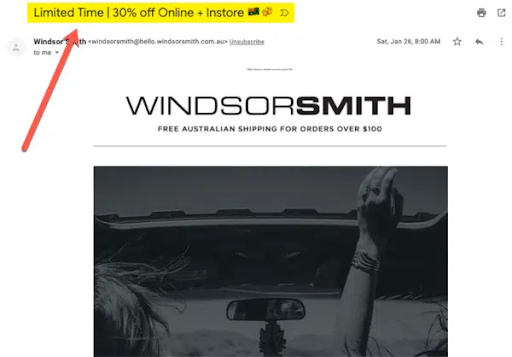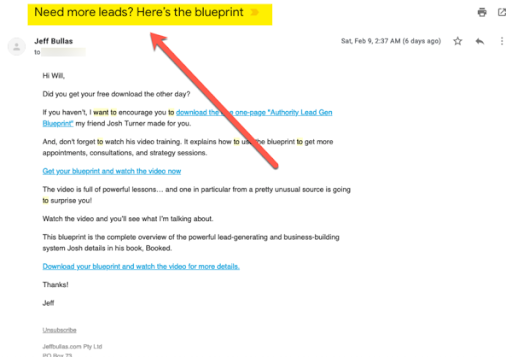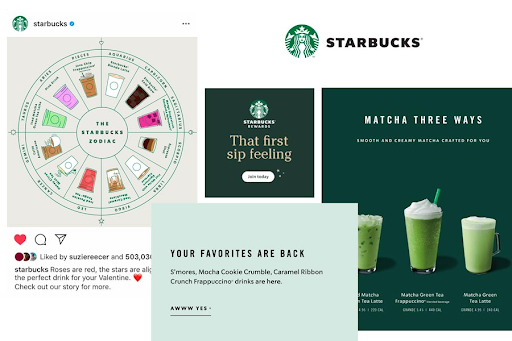What’s conversational marketing all about?
Conversational marketing is a type of marketing that relies heavily on chatbots and other conversational interfaces. This form of marketing aims to create a more personalized experience between the customer and the company.
It has three key benefits:
- Develops immediate trust
- Helps in getting customer’s attention
- Creates a two-way communication channel

71% of customers expect companies to communicate with them in real-time.
The idea behind conversational marketing is to create a more personal experience for customers.
Brands can create content, send it, and track its performance without ever speaking with their customers in person using conversational marketing.
This form of marketing has several benefits, such as increased efficiency, better customer service, and higher conversion rates.
Conversational marketing is a new way to connect with your audience, but how can you create a successful strategy?
Here are some tips to get started.
Top 11 Conversational marketing tips
1 . Be clear and straightforward with your content
A conversational marketing best practice is to write content that is easy to read and understand.
The goal is to get the reader's attention, so we need to use a conversational tone. You want to grab the attention of your readers, and you want them to know what they'll get from your content.
For example, if you are trying to connect with your audience via mail, try to make the content of your email seem more personal by using a simple style.
Image via Short Stack
While writing the mail, the subject line is an essential factor. Writing a conversational subject line ensures that the reader knows what they will be getting when they open up their email. It also helps you as a brand to stand out from other emails that might be approaching their inbox at the same time.
If you find yourself repeating words in the writing process, you can use a rewording tool to sharpen up your email.

Image via Short Stack
The second thing you need to do is be direct and honest with your content.
This way, the recipient will not feel tricked or deceived by what they read.
The best way to ensure this is by being straightforward about what you are trying to sell or promote in the email. Make sure you are concise and clear in your writing, you can use an AI summarizing tool to help you create a script for your email.
Also, proofreading is a must. Ensure that your writing is error-free by doing a manual grammar check or by using tools like an online punctuation checker. After all, polished and professional content leaves a great, lasting impression.
Lastly, try not to use jargon or language that might confuse your audience that sounds like it came from another planet for them to understand.
2. Create engaging content that connects with your audience
With social media becoming increasingly popular, it has become impossible for brands to not implement the power of these platforms in their marketing strategy. Brands are now using social media channels to create conversations with their audience and engage them in a way that they can’t do through traditional advertising methods.
Facebook ads are the most auspicious social adv platform for E-Commerce with 85% of social media orders, 1.86B users, a conversion rate of 1.85% and a ROI of 152%.
You can post content that encourages conversations. This will allow your audience to engage with you more meaningfully.

3. Have a consistent voice and tone across channels
A brand’s voice is the personality that will project to the customers. It is the tone to use when talking to customers, and it is also the tone to use in all of the written content.
Voice consistency makes your brand recognizable and relatable.

Image via Ebaq Design
Consistency across channels means that a brand has a unified voice on all of its social media platforms, email campaigns, and website. Therefore, the message should be the same no matter what channel you use to reach potential customers.
Importantly, consistency also applies to the tools that brands use for their marketing efforts.
For instance, nonprofits often rely on specialized tools, such as an email marketing software for nonprofits. Tools like these allow them to create responsive donor experiences and grow giving, while ensuring the voice and tone used in their email marketing aligns with the values and mission they express across all other channels.
4. Set yourself apart from the competition by creating memorable messages that stand out and drive results
The best way to stand out from the competition is to create memorable messages that drive results.
Image via Tatango
It's important to remember that your goal is not just to get a response when you're sending a message. Instead, your goal is to get potential customers interested in what you're saying.
Therefore, it's essential to keep your audience's perspective in mind when crafting a message. What might be a great message for you might not work for someone else.
5. Create deeper engagement with video content
People are spending more time on their screens than ever before. As a result, there has been a shift from just writing content to creating videos and live streams. This means that it's important to create engaging and interactive content.
Therefore, interactive videos are becoming one of the best ways for brands to reach out and create a more intimate connection with their audience. In addition, brands can also use live video streaming to communicate important messages.
6. Identify your goals and optimise your strategy accordingly

Of course, you can do many different things when it comes to conversion rate optimisation. But the most important thing is to identify your goals and optimize your strategy accordingly.
The first step is to identify your goals. For example, if you want more email subscribers, then you should focus on making it easier for people to subscribe through their email.
If you want more conversions, then you should focus on making it easier for people to buy or sign up.
If you’re not sure what your goal is, then ask yourself: “What do I want my users to do?”, once you know what goal you want to accomplish, optimize the site or app around that goal.
If you are still reading our blog, we would like to share some of our value-based tips that will make your brand stay on top of the game.
7. Focus on customers and not campaigns
Focus on value by being there for them and designing a conversation with them.
The customer is always right. This well-known phrase has been around for decades, but it's essential to keep this in mind even in today's digital age.
With the rise of social media, customers are more educated on what they want and when to purchase it.
Brands need to focus on their customer experience and create a conversation with them to provide value instead of selling them something meaningless.
8. Deliver value consistently: Provide meaningful content in a user-friendly way
The content that you publish should be more than just a product advertisement. It should provide valuable information and new insights to our customers. This way, you can get more conversions and improve the customer experience.
Conversations are the best way to create meaningful content for your customers. They allow you to understand what they are looking for, their pain points, and how you can help them solve their problems. Therefore, you should always be on the lookout for opportunities to start conversations with your audience to deliver value consistently in a user-friendly way.
9. Make conversation personal using data
The use of sensitive data in conversations can be a powerful tool for connecting with people more personally. Sensitive data is information that is not usually shared with people you don't know well, but when it becomes part of a conversation, it can help to humanize the interaction.
One example of this is using a person's name in conversation. This simple technique can make an individual feel more connected to the conversation and make them feel like they are being listened to and appreciated.
In order to make conversations more personal and contextual, it is essential to use sensitive data. This data can be used in conversations to provide a more personalized experience for the person on the other end of the chat.
10. Build brand relationships in on-demand channels
It's important to leverage new channels for an intimate connection with customers.
Earlier brands only had very few channels to connect with their customers. But with the popularity of apps like Messenger and WhatsApp, brands can now send messages directly to their customers.
When customers are on the company's website, they can chat with a customer service representative through live chat or email. When they are browsing social media networks like Facebook or Instagram, they can send messages or comments to the company's page.
Another way to build strong connections with your customers is by testing out new trends, like live shopping. Live shopping gives you the opportunity to communicate with your customers while also engaging over video.
Relationships with your audience have always been important, now more than ever. So while building a solid brand identity, is still crucial to any campaign to use new channels that are becoming available and put them to great use by connecting them with your customers for them to feel a sense of belonging.
11. Be quick!
In the digital era, customer service is no more about answering a phone call or email. Instead, it is about being available to customers 24/7 and answering their queries instantaneously.
Marketers need to be aware of the latest trends and changes in their market and have a fast response time. With conversational bots, marketers can respond to customer queries in real-time, 24/7.
Key point to take away
The key to a successful conversational marketing campaign is to have a good understanding of the audience. You need to know what they are looking for and their pain points.
You should also be able to speak in their language and understand their concerns. This will make them, more likely, connect with you and your brand.
Additionally, you should not be afraid of making mistakes or being vulnerable when conversing with your audience because that is what makes you human in the first place.
Finally, ensure that you provide value by giving your customers something they can’t find anywhere else, such as exclusive offers or deals to which no one else has access.
